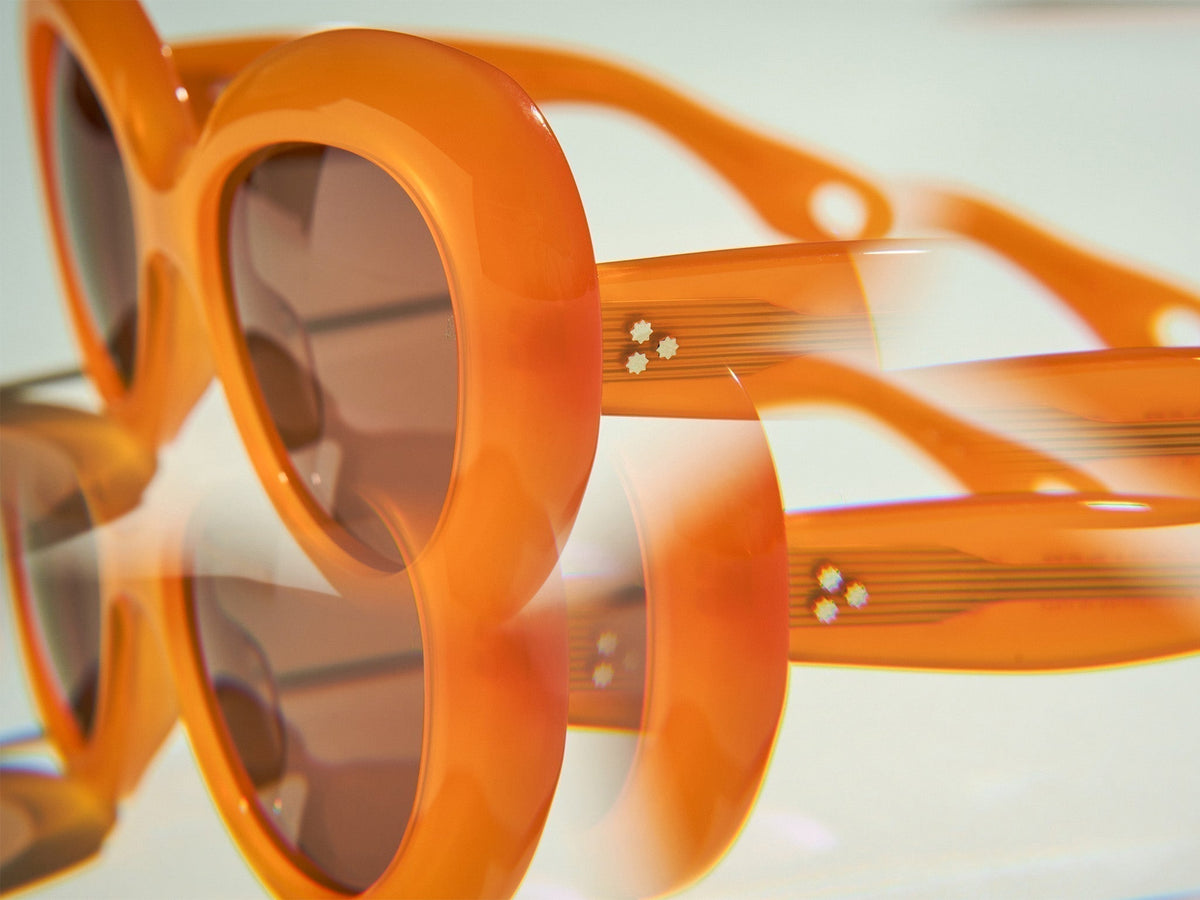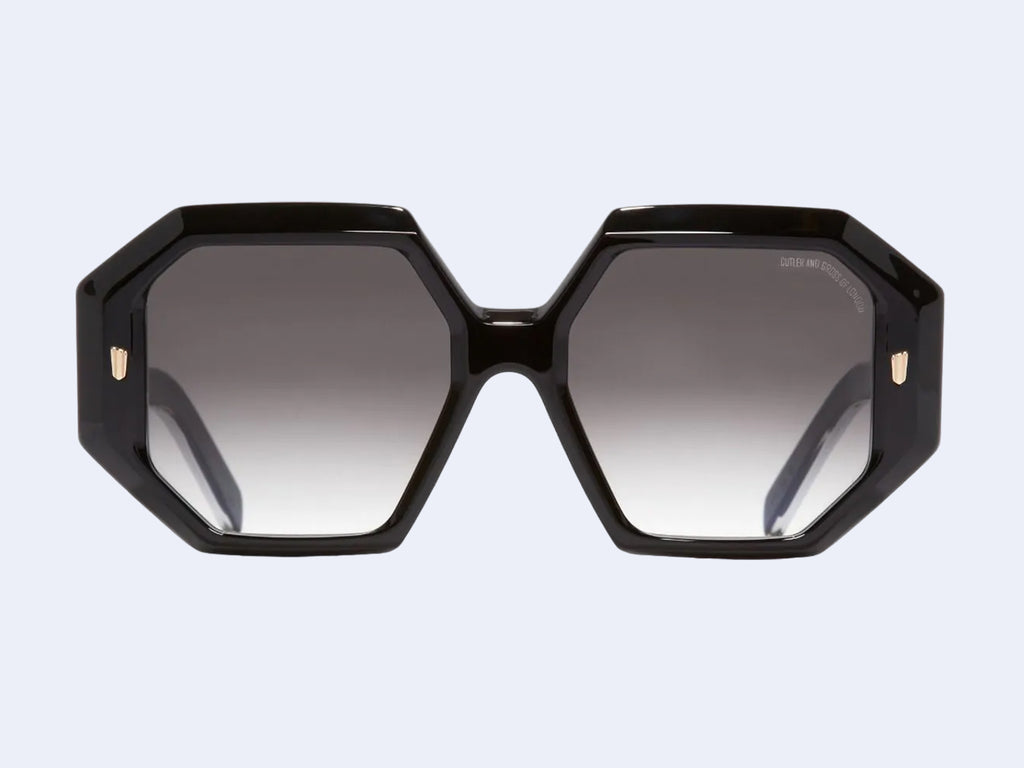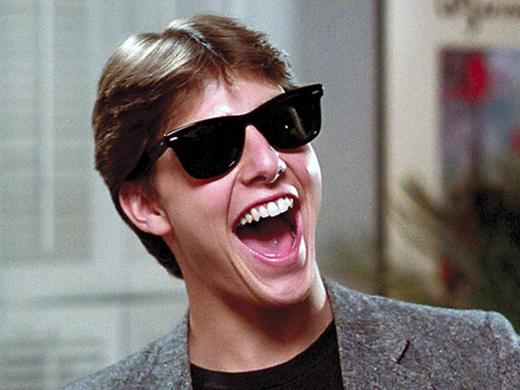Less ain’t always more. While there’s definitely a place for subtle shades and understated design, every now and again the situation calls for something big, brash and unashamedly brash. Which is where oversized glasses come in.
We probably don’t need to explain these too much, do we? With these things, the writing is most definitely on the wall, in block capitals no less. They’re big… real big—the kinds of frames that instantly command attention, turning heads so fast that you’re going to need a chiropractor on speed-dial.
If you wanted to clutch at straws you could probably say oversized glasses have roots in motorsports or the Air Force or… erm… welding—but although people have long used larger-than-average eyewear for safety or functional purposes, that's kind of unrelated to the rise of oversized frames in the civilian world.
The real root of oversized glasses seems to be the post-war explosion of modern youth culture which arose in the 1950s. From Buddy Holly's Wayfarers to Marilyn Monroe’s cat-eyes, the 50s planted the seed for really big frames as the new generation of icons sought to create their signature style. In a black-and-white era before colour TV landed, something like a big pair of glasses instantly made the wearer stand out on screen or stage—a visual prop every bit as effective as Elvis’ quiff or Sinatra’s fedora.
Things got even bigger in the ‘60s—which was probably the decade that oversized glasses really came into their own. At first it was merely a size thing, with larger versions of pre-existing designs—think Hepburn’s XL butterfly frames in 1961’s Breakfast at Tiffany's but as the decade began to develop its own identity, so too did its eyewear.
This was an era of looking forward, backwards and occasionally inwards, all at once. Radical writers like Philip K. Dick and Anthony Burgess were pondering life in a near future, while at the same time old ideas on spirituality, diet and lifestyle were being reconsidered by a more open and optimistic generation. This blend of the old and new could be seen in the designs of the day—with smooth organic shapes inspired by the natural world, combined with modern methods and materials.
Italian furniture designers ditched wood in favour of space-age plastic, poster designers in San Francisco fused art deco detailing with their LSD daydreams and eyewear went truly experimental. Huge yellow visors? Goggles built into hats? Lenses the size of dinner plates? All was fair game for the new band of conceptual creators as the rule-book was thrown straight out the circular window of a space shuttle—an influence still felt today in designs like Jacques Marie Mage's 2001 wraparound visor sunglasses.
At a time when every boundary was being pushed, eyewear designers like Pierre Cardin challenged themselves to create the most out there frames imaginable. While most were more catwalk curiosities and fashion mag conversation pieces, a few designs did make their way into real life… like the bug-eye frame.
Kind of like the insectoid cousin of the cat-eye, bug-eyes are maybe the archetypal oversized frames. Defined by their huge lenses and soft edges, they were a particular favourite with Jackie Kennedy Onassis, who used them as a stylish shield against the prying eyes and flashing cameras of the press.
Which brings us to maybe the key feature of these big ol’ glasses. Yep—they’re massive and they look cool and they turn heads, but at the exact same time, they’re also covert—giving the wearer a certain chic anonymity even while everyone’s looking right at ‘em. They grab attention while still maintaining a level of mystery—which is presumably why they’ve been so popular with those caught in the glare of the paparazzi.
Into the 70s this association only continued—with oversized glasses becoming the go-to choice for the off-duty A-lister, from Bianca Jagger to Clint Eastwood. Bruce Lee should maybe get a mention here too—as not only was he a true martial arts master, but he was also highly skilled in the lesser-talked-about art of wearing great sunglasses—often snapped in massive aviators.
It’s hard to quantify this in today’s era of hyper-connectivity—but for regular people living normal lives in the 1970s, these unattainable superstars strutting about in these ultra-extravagant supersized sunglasses must have seemed like they’d been beamed down from another world. Even now—the power of a well-crafted pair of oversized shades should not be understated, especially when brands like Cutler and Gross, Kuboraum and Jacques Marie Mage are turning their expert hands to unhinged maximalism.
From the bug-eyed brilliance of the Jacques Marie Mage Factory Sun to the Reginald Dwight-approved 9126 frames from Cutler and Gross, we seem to be in a new golden age for oversized excellence, and long may it continue. Subtlety is overrated anyway.







